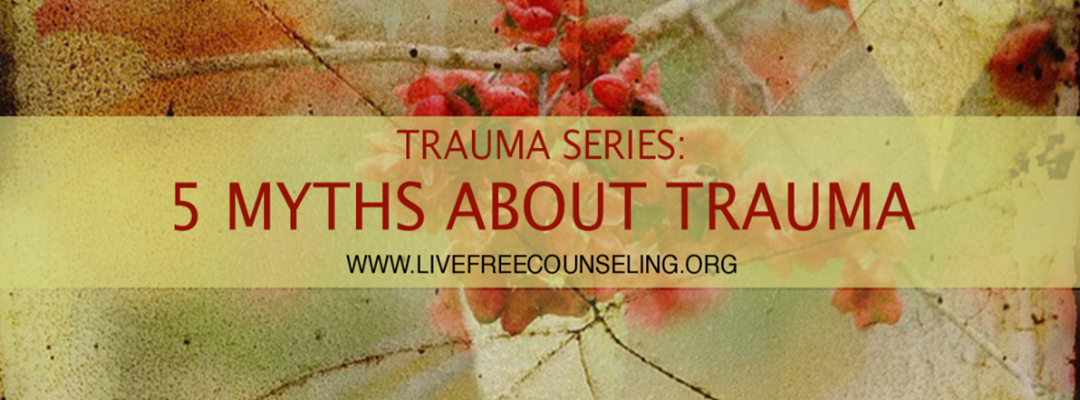Trauma is a universal experience, yet something few people want to talk about. There are many misunderstandings regarding trauma – what it is, what impact it has, what to do about it, and the list goes on. Here are five common myths I hear in my counseling practice:
Myth #1: Trauma is only the really big things, like physical and sexual abuse.
Physical and sexual abuse are certainly traumatic events, but that is not all. Trauma is more how a person perceived an event than the size of it. For instance, hearing parents fight every night may not phase one child, but may leave another scared and insecure. Perhaps more important is whether an event resulted in the person feeling scared, vulnerable, helpless, and viewing the world differently.
Myth #2: I must have done something to deserve it.
This myth is particularly prevalent for children who experienced trauma and abuse. It is one way the brain tries to regain a sense of a control in a powerless situation. It is easier for a child to believe that they somehow caused the abuse (which is never the case) and therefore had some control in the situation, than to believe they were truly powerless in the face of evil.
Myth #3: Time will heal my pain.
Trauma rarely heals on its own. Why? Because trauma is stored differently in the brain. According to trauma experts Bessel van der Kolk and Francine Shapiro, the brain is overwhelmed during traumatic experiences and the various aspects of memory, such as the thoughts, emotions, visual images, and physical sensations, are fragmented. This prevents the brain from working through it as it would with regular memories. As a result, the memory remains ‘raw’.
Myth #4: I am fine as long as I don’t think about it.
Over time, many people are able to find ways to avoid thinking about the unpleasant memories of their past. Unfortunately, that does not mean they are gone and do not continue to influence the person’s thoughts or actions. Beyond that, the ACE study by healthcare provider Kaiser Permanente (www.acestudy.org) shows that traumatic events, particularly in childhood, can have significant influence on physical health.
Myth #5: There’s nothing I can do about it. I just need to get over it.
There is a way to find freedom from trauma, no matter how big or small it may seem. EMDR (Eye Movement Desensitization and Reprocessing) is one of two forms of trauma treatment recommended by the World Health Organization. It is a specialized form of therapy that helps the brain work through traumatic memories. As a counselor, it is also one of the few things I have seen that actually allows a person to put their past behind them, find freedom, and move on.
Trauma may be a universal experience, but whether the memories continue to haunt you is up to you. There is a way out. There is a way to live free.
Photo by jinterwas CC BY 2.0.
________________________________________________________________
Published in the Tri-City TRIBUNE (Cozad, Nebraska) on January 29, 2015.

